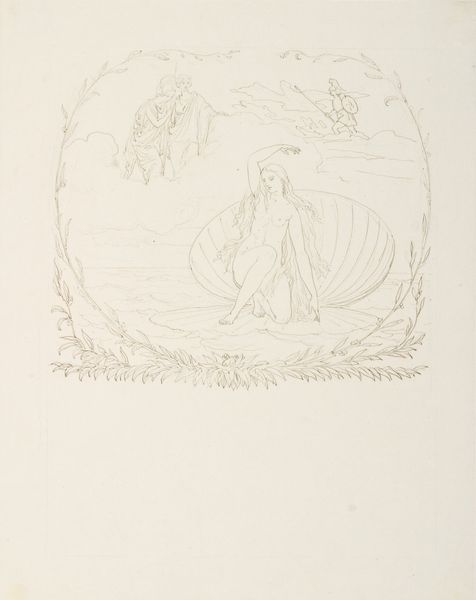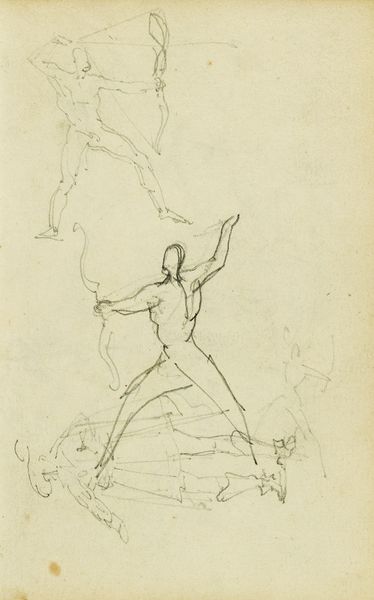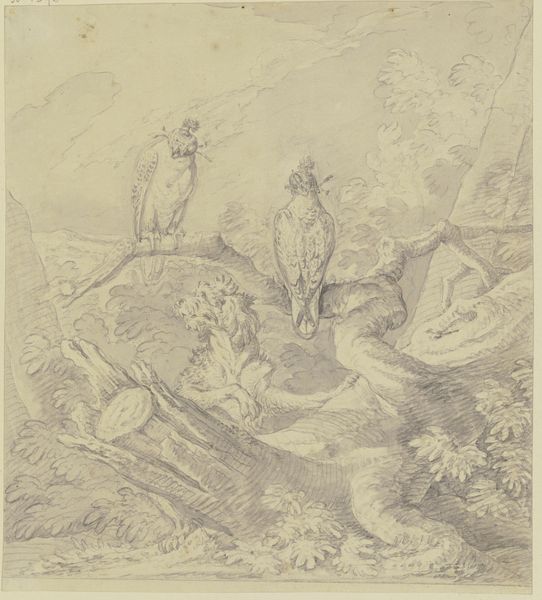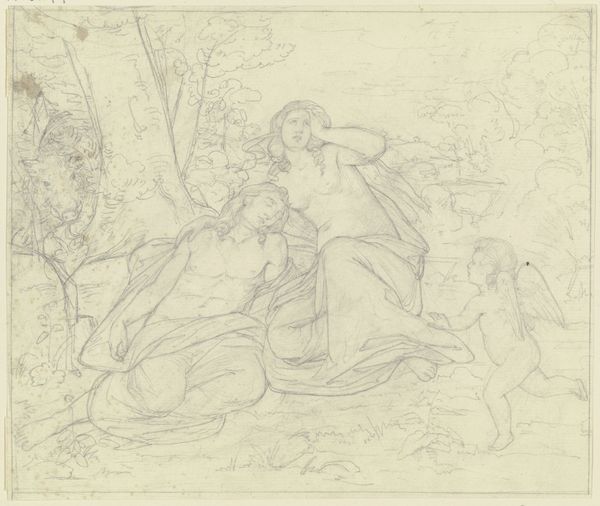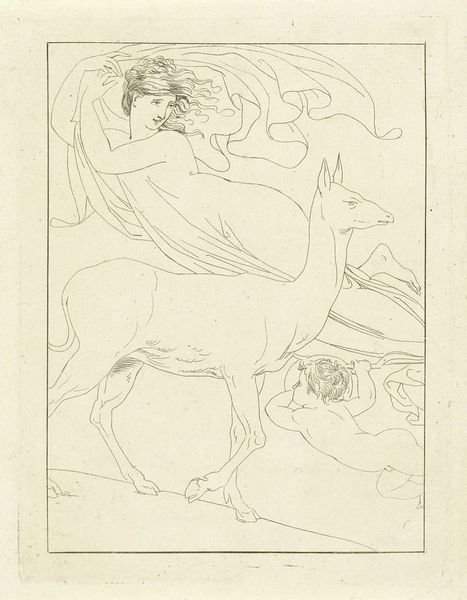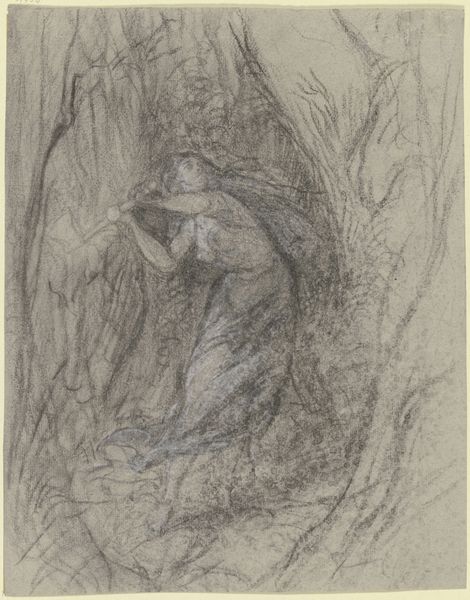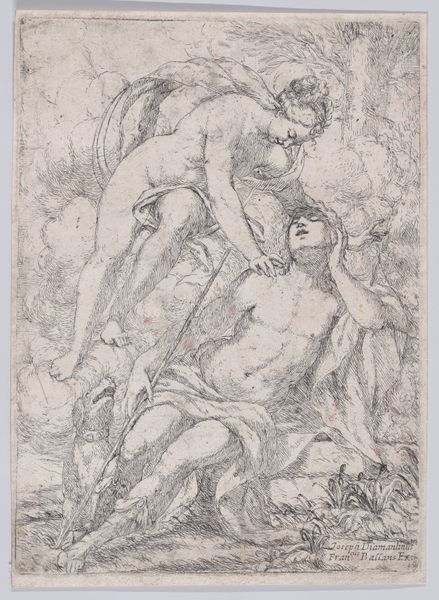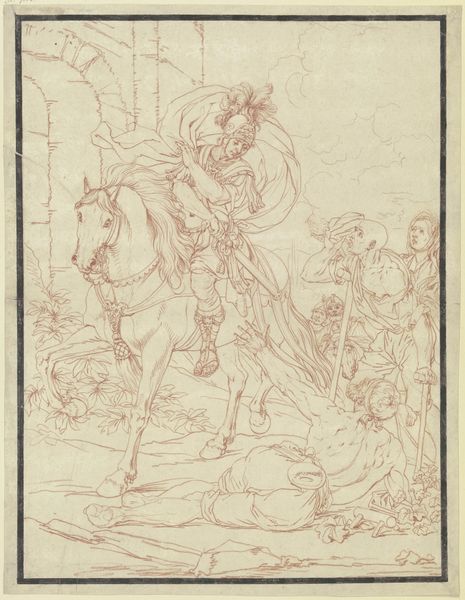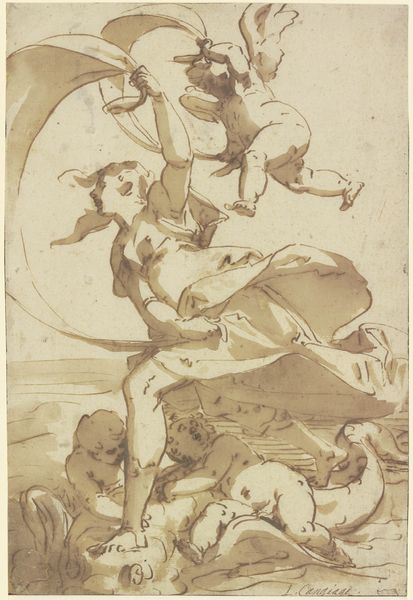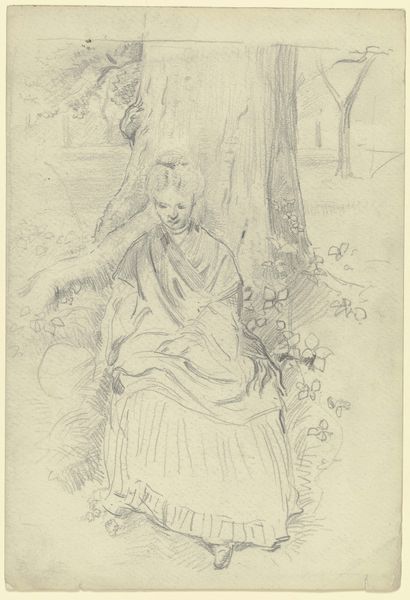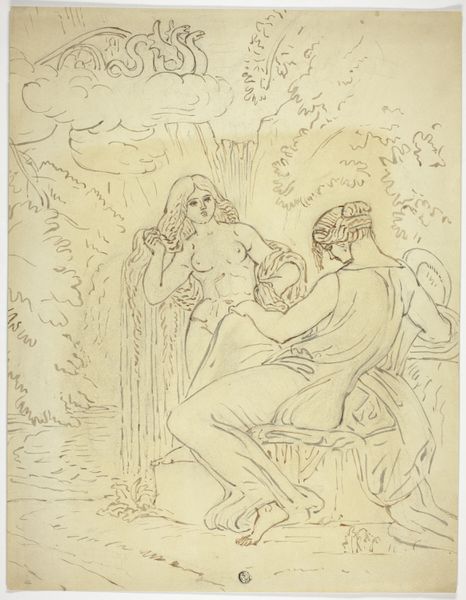
Jagender Jüngling zu Pferd, eine Blumen gießende junge Frau erblickend
0:00
0:00
drawing, ink, pencil
#
drawing
#
landscape
#
figuration
#
ink
#
romanticism
#
pencil
Copyright: Public Domain
Curator: Here we have an intriguing drawing by Jakob Jung, aptly titled "Jagender Jüngling zu Pferd, eine Blumen gießende junge Frau erblickend" – or, “Hunting Youth on Horseback, Catching Sight of a Young Woman Watering Flowers." It's currently held at the Städel Museum. Editor: My immediate impression is of delicacy, almost ethereality. The composition feels intentionally unfinished, lines soft, edges blurring the figures with their landscape. It captures a fleeting, almost dreamlike quality. Curator: Indeed. This is an early work that signals Jung’s engagement with Romanticism, and we can see its emphasis on emotionality, individualism, and the awe of nature, with specific references to the social dynamics that influence interactions with nature. What is the power dynamic between the maiden and the youth on horseback? Is she working? Is he entitled? Editor: The incomplete rendering reinforces this sense of transience. Observe how the lines barely contain the figures. There’s a tension created between definition and dissolution, almost like an allegory for desire—always just out of reach. Also, notice the relationship between the landscape, especially how the verticals draw the eye and force one to reconcile both elements—maiden/youth and tree/horizon, foreground and background. Curator: I find it significant that Jung chose this scene to depict – a hunting youth distracted, perhaps captivated, by a woman engaged in a peaceful, nurturing act. How can the composition serve as a feminist commentary on the violence in Romanticism’s trope of domination by an idealized, but hypermasculine figure? Editor: Perhaps. But formalism draws my attention to the fact that, while seemingly simple, Jung uses light and shadow very effectively to draw the viewer’s attention to his thematic concerns. Curator: Which underscores the drawing’s participation in contemporary discussions about Romanticism and patriarchal dominance! Editor: Perhaps. And beyond gender, class might be another point. That said, I leave here feeling invigorated by the simplicity and ambiguity. Curator: And I walk away pondering not only this relationship between male and female roles during that time period, but how relevant those same structures continue to influence society today.
Comments
No comments
Be the first to comment and join the conversation on the ultimate creative platform.
